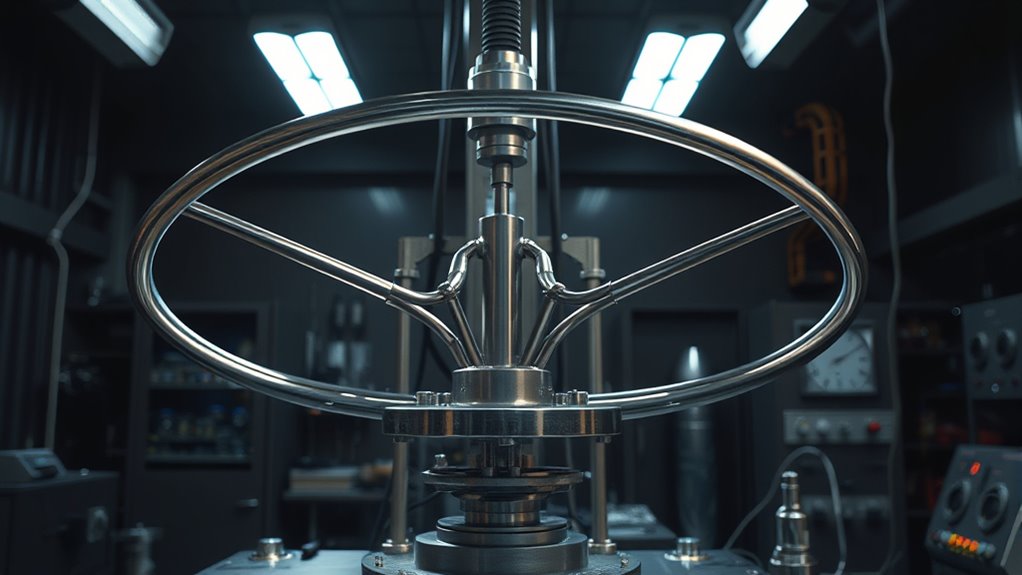If your 4-bar loop feels monotonous, look for signs like flat melodies or repetitive patterns. To break this, try surprising your listener with unexpected instrument swaps, key changes, or dynamic build-ups. Adding rests or silence can create tension and highlight moments, while gradual tonal shifts keep things fresh. Small, strategic twists keep energy flowing. Keep experimenting, and you’ll discover more ways to keep your loop engaging and dynamic as you explore further.
Key Takeaways
- Introduce unexpected instrument drops or swaps to refresh the loop and maintain listener interest.
- Implement subtle key modulations or tonal shifts to reinvigorate the harmonic landscape.
- Incorporate rhythmic displacement or accents to add unpredictability and energy.
- Use strategic silence or rests to create tension and highlight key moments.
- Build dynamic variations with layered sounds and build-ups to elevate emotional impact.
Recognizing the Signs of Loop Fatigue in Your Music

Recognizing the signs of loop fatigue in your music is crucial for maintaining energy and freshness. When a loop becomes monotonous, you might notice a lack of rhythmic complexity, making the track feel flat or predictable. Pay attention if the beat or pattern starts to feel repetitive, with little variation in timing or accents. Similarly, a decline in melodic variation can signal fatigue; if melodies stay static or sound overused, your listeners will lose interest. You might feel a sense of stagnation or notice that the groove no longer sparks excitement. These signs indicate it’s time to introduce subtle changes or twists to keep the rhythm engaging and melodies lively. Incorporating textural variation can help break the monotony and re-engage your audience. Staying alert to these cues helps you refresh your track and sustain listener engagement.
Strategic Use of Unexpected Instrumentation Changes

Introducing unexpected instrumentation changes at strategic moments can inject fresh energy into your track and break up repetitive loops. Instrumentation surprises, like suddenly dropping a layer or swapping out instruments, keep listeners engaged. You can also achieve an arrangement inversion—flipping the typical instrument roles or order—to create contrast and maintain interest. For example, bring a bassline to the forefront unexpectedly or replace a sustained pad with a rhythmic synth. These shifts catch the listener off guard and prevent fatigue in a 4-bar loop. Timing is key: insert these changes where they feel natural yet surprising. By carefully planning instrumentation surprises and arrangement inversions, you’ll keep your track dynamic and compelling, encouraging your audience to stay engaged through every twist. Understanding music structure can help you identify the best moments for these surprising changes.
Modulating Key and Tonal Shifts to Surprise the Listener

Modulating the key and introducing tonal shifts can instantly catch your listener off guard and reinvigorate a repetitive loop. By shifting keys, you create fresh emotional context, making familiar material feel new. You can layer a counter melody in the new key or use rhythmic displacement to enhance the surprise, keeping your audience engaged. Effective modulation often involves subtle transitions that gradually lead the ear elsewhere. Consider this table to understand the deeper meaning behind these choices:
| Technique | Effect |
|---|---|
| Counter melody layering | Adds complexity and depth |
| Rhythmic displacement | Creates unpredictability |
| Modulation to relative key | Smooth transition, surprise |
| Sudden key change | Jarring, attention-grabbing |
| Gradual tonal shift | Builds anticipation |
Using harmonic progression can also help guide your modulation smoothly.
Use these methods to keep your arrangement dynamic and unpredictable.
Incorporating Dynamic Variations and Build-Ups

Building on your understanding of tonal shifts, incorporating dynamic variations and build-ups can considerably heighten the emotional impact of your 4‑Bar Loop. Use dynamic layering to add depth, gradually increasing volume or intensity to create momentum. Experiment with rhythmic complexity by varying the pattern’s accents and timing, making the loop more engaging. Build-ups can start subtly, adding layers or increasing dynamics to lead your listener toward a climax. This technique keeps the energy flowing and prevents fatigue, giving your loop a fresh sense of movement. Focus on how gradual changes in dynamics and rhythm build anticipation, making the eventual release feel more powerful. Incorporating sound effects such as risers or impacts can further enhance the sense of progression and drama. These strategies transform a simple loop into a dynamic, emotionally charged musical statement.
Creative Use of Silence and Rest to Create Tension

Utilizing silence and rests effectively can dramatically heighten tension within your 4‑bar loop by creating moments of pause that draw the listener’s attention and anticipation. Silence as tension works by allowing a brief break in the music, making the subsequent notes feel more impactful. Rest for emphasis helps highlight specific beats or motifs, giving them space to breathe and resonate. Strategic placement of rests can create a sense of unpredictability, encouraging your audience to lean in for what’s coming next. Don’t be afraid to hold back; sometimes, the absence of sound speaks louder than continuous notes. These techniques not only build excitement but also give your arrangement a dynamic edge, making your loop more engaging and compelling. Additionally, understanding credit card security measures can inspire you to incorporate secure and trustworthy practices into your musical projects, ensuring your creative assets are protected.
Frequently Asked Questions
How Can I Prevent My Arrangement From Feeling Repetitive Over Time?
To prevent your arrangement from feeling repetitive, focus on adding dynamic variation and strong thematic development. Change up your instrument voicings, rhythms, and dynamics regularly to keep listeners engaged. Introduce subtle shifts in melody or harmony to develop themes throughout the piece. Experiment with arrangement plot twists by surprising your audience with unexpected tonal shifts or rhythmic accents, ensuring your music stays fresh and enthralling from start to finish.
What Are Some Common Pitfalls When Implementing Unexpected Plot Twists?
When implementing unexpected plot twists, avoid predictable twists that your audience can see coming. Don’t rely on overused devices like shock for shock’s sake or sudden character reversals without proper setup. Instead, build subtle clues throughout your story, so twists feel earned and surprise viewers genuinely. Staying mindful of these pitfalls guarantees your plot twists enhance your story, keeping your audience engaged without feeling forced or cliché.
How Do I Balance Surprise Elements With Cohesive Storytelling in Music?
To balance surprise elements with cohesive storytelling in music, you should focus on maintaining musical unpredictability while ensuring emotional coherence. Use unexpected twists sparingly, so they enhance rather than disrupt the narrative. Connect surprises with the core theme, guiding listeners through subtle shifts that evoke genuine emotion. Keep your arrangement intentional, blending familiar motifs with surprising elements, creating a seamless flow that keeps your audience engaged and emotionally connected throughout the piece.
Are There Specific Genres That Benefit More From Arrangement Plot Twists?
You might find that genres like progressive rock, jazz, or electronic music benefit more from arrangement plot twists, thanks to their openness to genre experimentation. These twists heighten emotional impact, keeping listeners engaged and surprised. By playing with unexpected shifts and structures, you enhance storytelling, making your music memorable. So, if you want to evoke strong emotions, consider incorporating arrangement plot twists within these genres for maximum effect.
How Can I Effectively Test Audience Reactions to My Arrangement Changes?
To effectively test audience reactions to your arrangement changes, focus on gathering honest audience feedback through reaction testing. You can do this by performing live, recording performances to review or conducting surveys afterward. Pay attention to their body language, expressions, and comments. This direct feedback helps you understand what resonates and what doesn’t, allowing you to refine your arrangements for maximum impact and engagement in future performances.
Conclusion
By subtly weaving in surprises and gentle twists, you can breathe new life into your 4-bar loop. Sometimes, a quiet pause or a slight shift in tone offers just enough space for your listeners to breathe and rediscover the magic. Embrace these delicate nuances, and your music will feel fresh without losing its core. With thoughtful arrangement, you can turn familiar patterns into delightful journeys, inviting your audience to always stay enthusiastic for what’s next.










